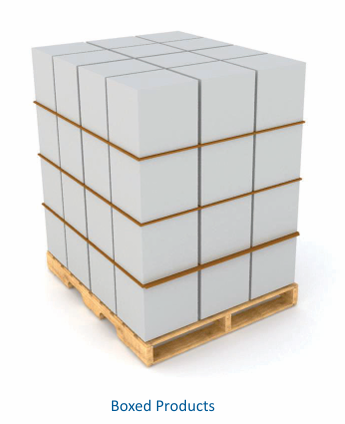In the efficient operation of Sam's Club, palletized selling is a key link to ensure the aesthetic display of products, stable transportation, and customers' shopping experience. Today, we will focus on the boxed products design style to comprehensively analyze the specification requirements and best practices of Sam's palletized selling, helping supplier partners to efficiently and compliantly launch products on the shelves.

1. Design Style Analysis: The Stacking Aesthetics and Pragmatism of Boxed Products
For boxed products, Sam's Club has launched the palletizing specification of boxed products design style. As shown in the diagram, its core is to achieve the dual goal of "aesthetic display + structural stability" through a regular stacking design—not only ensuring the compression resistance of products in the warehousing and transportation links but also presenting a neat and recognizable visual effect on the store shelves, making it easy for members to find and purchase products quickly.
2. Core Requirements for Palletized Selling of Weight-Bearing Products
Not all palletized products can be "palletized at will". Especially for weight-bearing boxed products, the following requirements must be strictly followed: - Shoppability: Products must be shoppable from at least three sides to allow members to easily select from multiple angles and enhance the shopping experience. - No Overhang: Products must not extend beyond the edge of the pallet (no overhang) to avoid product falling or damage due to collision during transportation and display. - Dimension Specifications: The total underhang shall not exceed 3 inches, and the unit footprint shall meet the minimum specification of 45”x37” to ensure the space utilization and stability of stacking. - Packaging Performance: The packaging of the selling unit must meet or exceed the ISTA 6-SAMSCLUB transit testing requirements to ensure that the products remain "intact" during long-distance transportation and warehouse stacking. - No False Bottoms: The "false bottom" design is firmly prohibited to ensure the true stability of the stacking structure and avoid collapse risks due to insufficient bottom support.
3. Best Practices: These Details Make Palletizing More "Reliable"
In addition to the mandatory requirements, these additional suggestions can further optimize the palletizing effect: - For smaller selling units, pallet pads and tie sheets may be needed to enhance stability and prevent product displacement during transportation. - Top shipping caps or top sheets are required during transportation to put a "protective coat" on the top-layer products and avoid appearance damage due to friction and collision during transportation.
4. Required Reference Sections: The "Triple Verification" of Compliance
To ensure full-process compliance, the following three sections are mandatory reference requirements and must be checked one by one: - Package Testing Section: Focus on verifying whether the packaging has passed the ISTA 6-SAMSCLUB transit test to ensure the product's durability from the source. - Weight & Height Requirement Section: Clarify the weight and height limits of the product to avoid safety hazards or display inconvenience caused by overweight and overheight. - Unitization & Shipping Section: Standardize the unitization operations (such as bundling, labeling) and transportation processes after palletizing, making the whole link from the factory to the store "compliant and efficient". By following the above guide, your products will not only be "stable as a mountain" in the display and transportation of Sam's Club but also convey the brand's rigorous attitude towards quality through professional packaging and palletizing design, ultimately winning the trust and favor of members.
For more questions related to Sam's Club packaging solutions, please consult CTK!
 National service hotline:+86(0)755-2898 7706
National service hotline:+86(0)755-2898 7706





